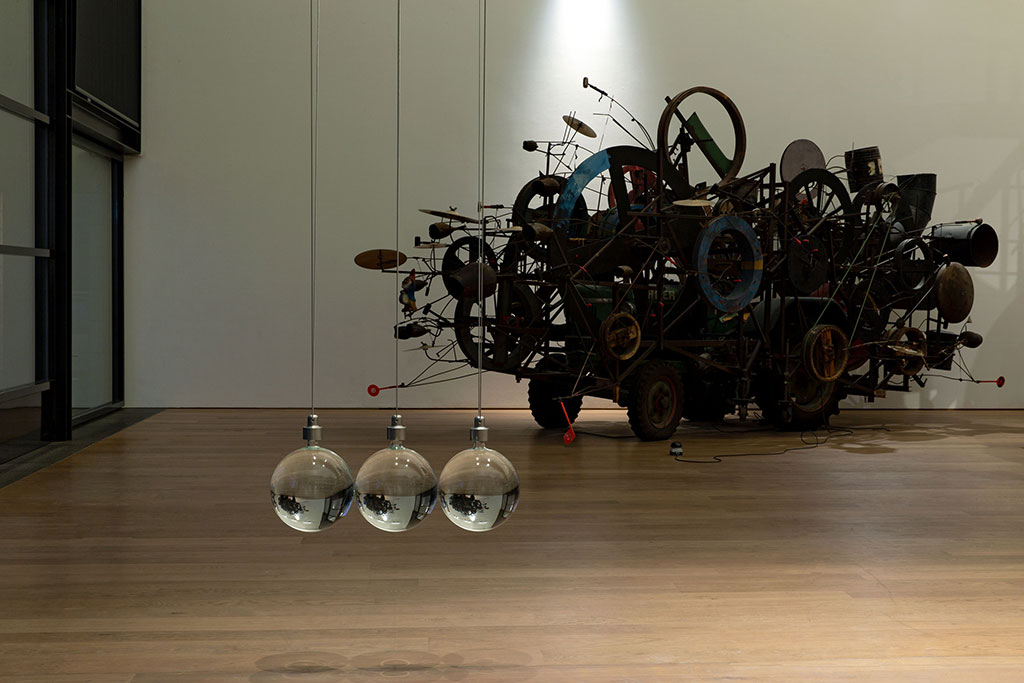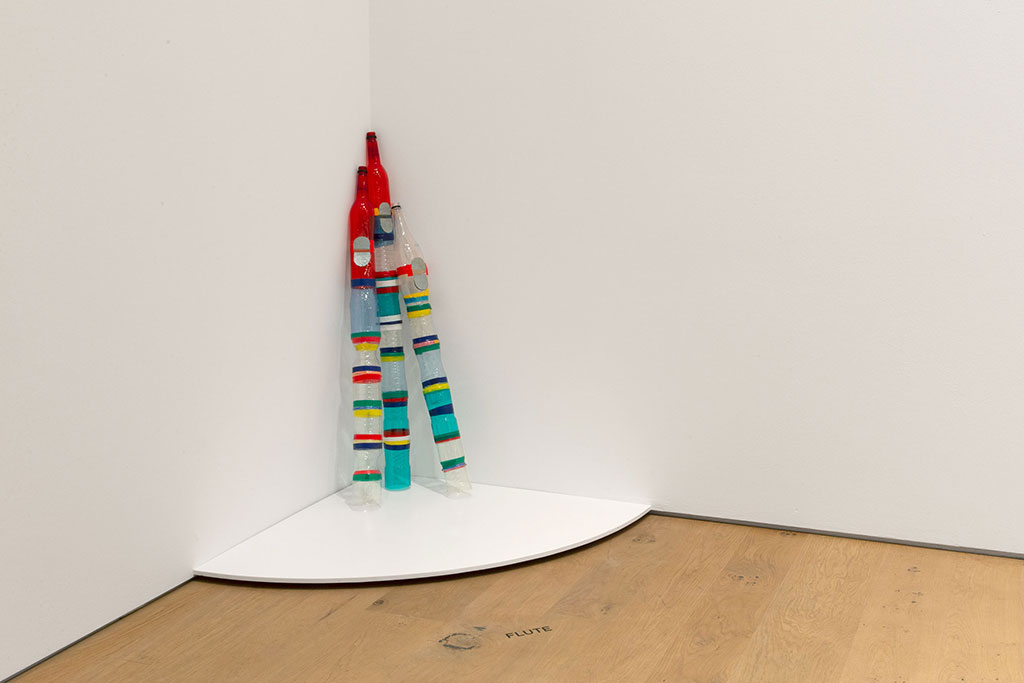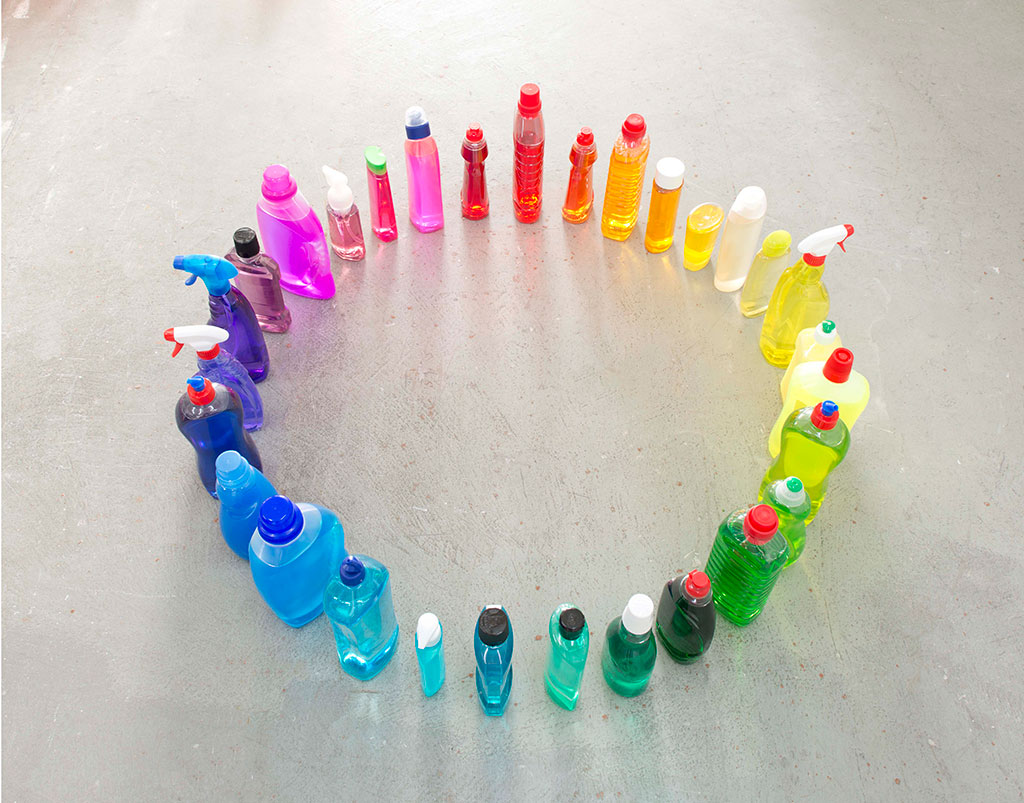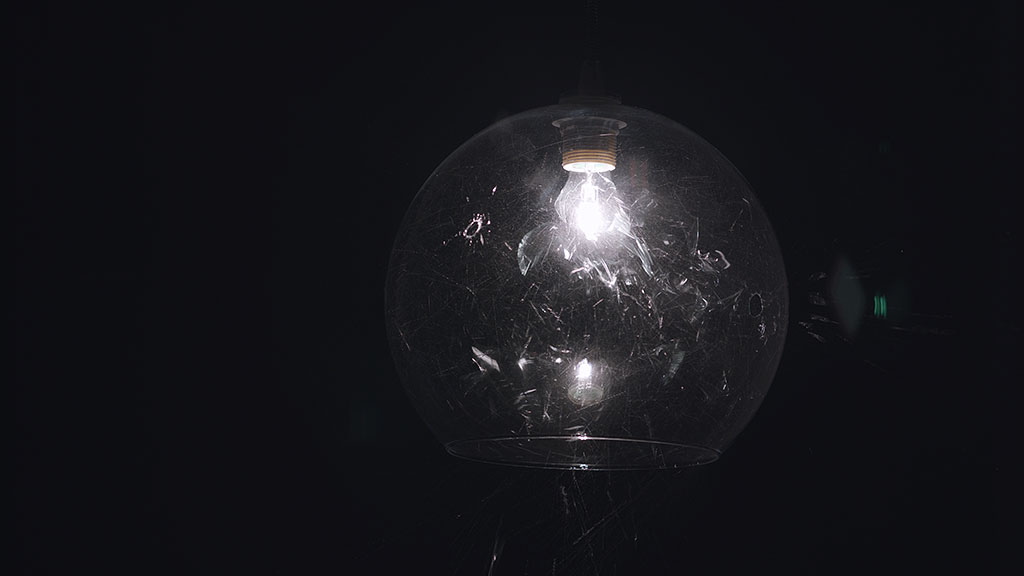ART-PRESENTATION: Katja Aufleger-GONE
 With her works, the Berlin-based multimedia artist Katja Aufleger seeks the simultaneity of possibilities to pose existential questions: sculptural and filmic, visual and auditory. The seductive aesthetic of her works surprises with unexpected, dangerous, or profound twists. Such interconnections are created, for example, when Aufleger brings a glass pendulum construction into the exhibition space, which stimulates viewers to contemplate setting it in motion. In addition to the obvious fragility of the glass flasks, the components of nitro-glycerine are also found in the thus literally explosive museum installation.
With her works, the Berlin-based multimedia artist Katja Aufleger seeks the simultaneity of possibilities to pose existential questions: sculptural and filmic, visual and auditory. The seductive aesthetic of her works surprises with unexpected, dangerous, or profound twists. Such interconnections are created, for example, when Aufleger brings a glass pendulum construction into the exhibition space, which stimulates viewers to contemplate setting it in motion. In addition to the obvious fragility of the glass flasks, the components of nitro-glycerine are also found in the thus literally explosive museum installation.
By Dimitris Lempesis
Photo: Museum Tinguely Archive
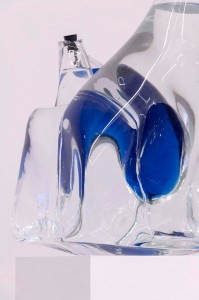
The first solo exhibition in Switzerland by Katja Aufleger entitled “GONE” brings together works from the past decade: breakable sculptures, hazardous chemicals and video works. With transparent materials such as glass, plastic and colored liquids, but also immaterial components like sound and movement Aufleger develops fragile installations and films. At first glance, the objects seem familiar and appealing, but on closer inspection it becomes clear that the works are inhabited by uncertain or even dangerous tensions. Using this kind of ambivalences the artist criticises institutions and questions power structures and systems. In the main hall at Museum Tinguely, three round-bottomed flasks filled with transparent liquid hang from the ceiling on steel cables. Entitled “NEWTON’S CRADLE” (2013/2020), this work is an oversized version of a desktop toy in which the collisions of five suspended metal balls demonstrate the transfer of kinetic energy. If one were tempted to do the same with Aufleger’s glass spheres in the exhibition space, however, the destructive power would be enormous, as the fragile vessels contain the three chemicals needed to make nitroglycerin. Whereas here the destruction remains a theoretical possibility, in “LOVE AFFAIR” (2017) glass really does burst. In close-up, the video shows light bulbs against a dark background. The silence is suddenly broken by a loud bang. One after the other, the lamps are destroyed by projectiles. This discharging of tension remains caught in an endless loop, however, oscillating rhythmically between attraction and danger. Both challenging and inviting, Aufleger’s art develops its full power when the destructive moment of change (either real or imagined) sets colorful cleaning agents that combine to form a harmonious chromatic circle instead of removing discolorations “AND HE TIPPED GALLONS OF BLACK IN MY FAVORITE BLUE” (2014)], as well as video works which, in their two-dimensionality, convey a high sculptural quality. In her video work “THE GLOW” (2019), we see fishing lures being dragged through swimming pools. Different underwater shots alternate at short intervals, with changing perspectives, surroundings, light conditions and lures. We hear a rhythmic clicking or clacking, sometimes matching the movements and then out of synch with them. These are excerpts from fishing tutorials in which anglers demonstrate the effect of the lures. The rubber fish become marionettes in an amusing puppet theatre or animated avatars in a digital world. The wobbly videogame aesthetics of these amateurishly produced films against a background of blue-tiled, deserted underwater architecture appears apocalyptic, and at the same time humorous. In order to materialize her sculptural ideas, Aufleger either uses a video camera or shapes clay with her own hands. But for precise results, she also has her ideas realized by glassblowers or programmers. Loops, grouping and repetition generate cyclic systems with no beginning or end. The artist strips out familiar structures or methods, freeing them of their routine connotations and filling them with new possibilities. In this way, she creates spaces of imagination by repurposing materials in surprising ways. Aufleger’s works critique institutions, question roles and cross borders: curators bring even the most explosive works into the museum, while the audience becomes the most important player in her conceptual games. The exhibition is located close to Jean Tinguely’s “Mengele-Dance of Death” (1986). Whereas this late work deals openly with death and annihilation, in “GONE: the focus on transience only becomes apparent at second glance. Themes like ephemerality, an awareness of constant change, or the involvement of everyday life and the viewer in fine art offer many parallels with Tinguely’s oeuvre. Further works by Aufleger are e found in the main exhibition hall alongside Tinguely’s walk-in installation “Grosse Méta-Maxi-Maxi-Utopia” (1987), in the corridor and on the basement floor, situating her practice within the monographic museum of the Swiss artist who saw permanent change as the only constant. Precisely this tension, the moment before change takes place, is what interests Aufleger most of all. In Aufleger’s world, it is only at second glance that one becomes aware of both the fleetingness of a moment and its complexity.
Photo: Katja Aufleger, BANG !, 2013–2016 Installation view «Katja Aufleger. GONE »Series: Glass, various explosive substances, rubber Per sculpture approx. 50 x 30 x 30 cm, © Katja Aufleger, Courtesy of the artist; STAMPA Gallery, Basel; Galerie Conradi, Hamburg Photo: Gina Folly
Info: Curator: Lisa Grenzebach, Museum Tinguely, Paul Sacher-Anlage 1, Basel, Duration: 2/12/2020-14/3/2021, Days & Hours: Tue-Sun 11:00-18:00, www.tinguely.ch

